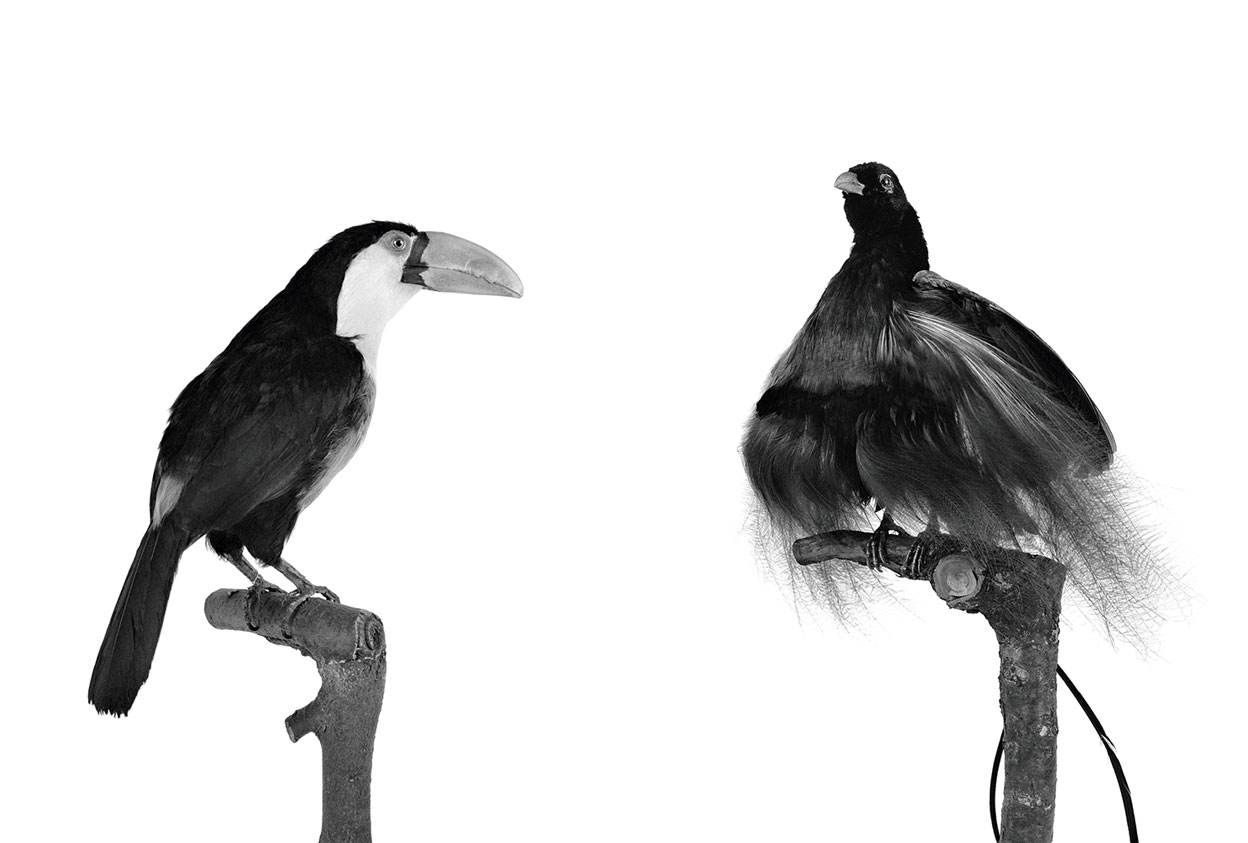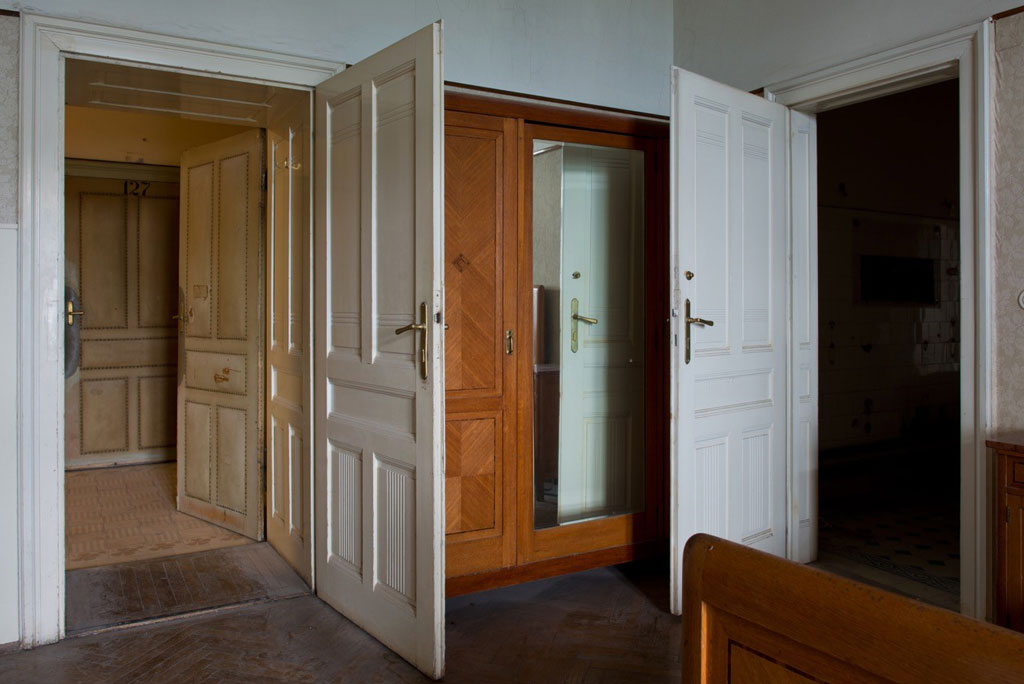PHOTO:VOID,Part I
 By juxtaposing Yvonne Oswald’s photographs of deserted rooms of a former grand hotel in the Austrian Alps with Tatiana Lecomte’s pictures of mounted birds from the collec¬tions of the Natural History Museum in Vienna the “VOID”, draws attention to forgotten and repressed aspects of Jewish history in Austria. By bringing together these different artistic positions, the curators prompt a discourse about commemoration, its representability and communication (Part II).
By juxtaposing Yvonne Oswald’s photographs of deserted rooms of a former grand hotel in the Austrian Alps with Tatiana Lecomte’s pictures of mounted birds from the collec¬tions of the Natural History Museum in Vienna the “VOID”, draws attention to forgotten and repressed aspects of Jewish history in Austria. By bringing together these different artistic positions, the curators prompt a discourse about commemoration, its representability and communication (Part II).
By Efi Michalarou
Photo: ACFNY Archive
Yvonne Oswald’s work in her series “The Südbahnhotel” captures the absence resulting from the expulsion and murder of Jews after the so-called Anschluss. The once luxurious Südbahnhotel on the Semmering mountain pass was the cultural hub of the fin de siècle society outside Vienna and, until 1938, a meeting place for numerous Jewish guests. Personalities such as Arthur Schnitzler, Sigmund Freud, Karl Kraus, Peter Altenberg, Gustav Mahler, Franz Werfel, Stefan Zweig, and Ludwig Wittgenstein, all of whom decisively shaped the cultural and intellectual life of the twentieth century, were closely connected with the Semmering and the Südbahnhotel in their work. Yvonne Oswald’s creative documentation balances on a knife’s edge: just as she delicately records the decline, loss of function, and crumbling decay of the hotel like an anatomist dissecting a cadavre exquis*, the observer becomes increasingly outraged at this terminality, growing intimately familiar and even identifying with the hotel. Through her pictures the photographer manages to create a longing for these spaces and an urge to leave on the spot and book a room – as if the decline and even more the planned new utilization and conversion were a huge misunderstanding that needed to be rectified without delay. The quality of the workmanship makes it even more unthinkable that it will be changed or even destroyed. The photographer’s delicate composition and coloring, the close-range shots, do nothing to detract from the extreme physicality of Oswald’s work. Each picture communicates organically with the observer, not just in its painful beauty but also in the pain of loss. The feeling of nostalgia is all the greater as it is also a product of the fin-de-siècle nostalgia that inspired the original project. A few of the photos uses reflections. The interiors, in whole or in part, are seen as if through a hand-blown mirror whose unevenness produces distortions and bizarre effects. They become blurred, softened, dematerialized in an aqueous solution – as if anticipating their dissolution and showing what a vague memory of a defunct world might look like. But apart from their pictorial quality, the blurred reflections also make it seem as if the furniture, wall decorations, and fluting, whose material existence transverses the passage of time, were being misshapen and liquefied on their way to disappearance, like all of the people who once inhabited these rooms. Tatiana Lecomte, in turn, explores issues of pictorial memory through reflections on the “unrepresentable” quality inherent in every photographic representation. Her photographs of mounted birds call key aspects of photography such as the accurate reproduction and documentation of reality into question. Concerned with the adequacy of reproductions to communicate memories, these photographs thus become a contemplation of the pictorial representability of the unimaginable, traumatic experiences of the Shoah. The artist primarily draws on found images or existing reproductions, which she in turn re-photographs, enlarges using analogue techniques, subtly manipulates, photographs yet again, and continues to develop by hand. At times this results in a cycle of reproductions, with the interventions sometimes barely perceptible and other times absolutely discernible.
* Cadavre exquis, is a method by which a collection of words or images is collectively assembled. Each collaborator adds to a composition in sequence, either by following a rule or by being allowed to see only the end of what the previous person contributed.
Info: Curators: Danielle Spera and Astrid Peterle, Austrian Cultural Forum New York (ACFNY), 11 East 52nd Street, New York, Duration 12/3-16/6/19, Days & Hours: Daily 10:00-18:00, www.acfny.org









